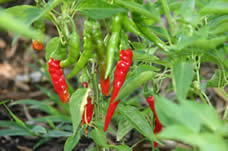History of Traditional Tribal Foods
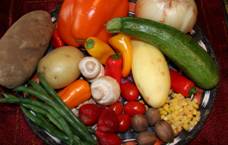
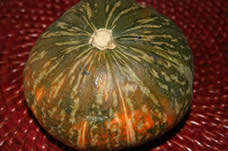
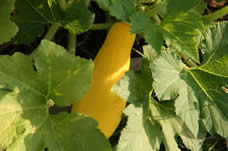
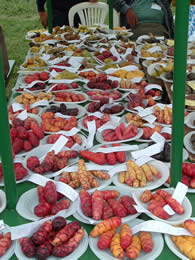
Bottom, potatoes at the "International Potato Year," 2005 in Lima.
Thanks to Astrid Elena Houchin for the picture.
Think of Thanksgiving dinner: turkey, cornbread stuffing, salad of red, green and yellow vegetables, green beans, squash, tomatoes, corn bread, cranberry sauce, baked beans and maple syrup, and mashed potatoes; appetizers of smoked salmon and peanuts and desserts of peanut brittle, pecan, sweet potato and pumpkin pie.
What all the foods have in common is that they are indigenous to the Western Hemisphere. The “Americas,” as we now call them, has provided the world with at least half the plants foods we know today. This “New World” was home to a plethora of fruits and vegetables, including those mentioned above and tomatoes, an array of chile peppers than span the heat index, beans of many kinds, cherries, acorns, pinon nuts, pecans, black walnuts, hickory nuts, vanilla, avocado, yellow and red bell peppers, manioc, strawberries, blueberries, cactus, guava, papaya, passion fruit, pineapples, artichoke, and cacao (those golden-green pods that mixed with sugar and other ingredients give us chocolate).
Corn played the major dietary role in many of the New World tribes. By 1492, Indigenous peoples were cultivating at least 200 types of maize, some of which Columbus took with him back to Europe. From there, maize was taken to the Mediterranean; the Venetians took it to the Near East, then to other places around the world.
In South America, a variety of foods unfamiliar to most of us supplied Natives (most notably the Peruvians) with adequate nutrients: grains with twice the protein content of white, rice or corn, potatoes with a naturally buttery taste; tubers that were pink, yellow and red striped; purple, white and yellow roots with a taste like celery, cabbage and chestnuts. Incredibly, Natives of the Andes cultivated almost 3000 types of potatoes. The conquistadores, in their religious and economic zeal, destroyed those crops in favor of more European traditional crops of wheat and barley. Fortunately, there is a resurgence of some of these foods in the produce aisle: cherimoya, tamarillo, quinoa, and pepino dulce.1
Some scholars argue that the basis of Natives’ diet was “guts and grease.” This is debatable, considering the sheer variety of vegetable matter available to some groups. While some tribes may have depended on animals for the vast majority of their diet (such as Arctic and Plains tribes), not all of them did.2 Still, although during times of difficult hunting tribes would depend on vegetables, fruit, nuts and seeds, most tribes people were not vegetarians. Depending on where they lived, Natives consumed alligators, bears, beavers, buffalo, caribou, deer, moose, ducks, elk, rabbits, a variety of fish (salmon, smelt, bass, trout, sturgeon, etc.), geese, insects, opossums, raccoons, squirrels, turtles, seals, shellfish and whales, to name a few animals.
Tribes also included a variety of “wild plants” in their diets: arrowroot, bearberry, black birch, black mustard, bulrush, buttercup, cattail, chickweed, chokecherry, coltsfoot, common pantain, dandelion, elderberry, evening primrose, great burdock, lamb’s quarters, milkweed, mint, ostrich fern, purslane, stag sumac, stinging nettle, thistle, watercress, wild rose, wintergreen, wood sorrel, yellow clover, yellow waterlily. These plants were usually eaten raw, cooked, as a beverage, mixed in soups and stews.
Natives used a number of herbs for medicines, many of which are the basis for modern medicines. Earache, for example, was treated by Kickapoos with boiled and strained mescal beans poured into the ear; Sioux tribes used boiled white milkwort and Winnebagos used boiled yarrow. Fevers were treated by Choctaws with bayberry tea, while Delawares and Alabamas boiled and drank dogwood bark. Pomos boiled the inner root bark of the western willow, the Natchez used red willow and Pimas, Mohegans, Penobscots also used willow for fevers and chills. Onondagas drank pennyroyal tea while Mescalero Apaches used another variety of pennyroyal by inhaling crushed twigs. Navajos used fendler bladderpod tea, saltbrush and crushed snakeweed to treat insect bites and stings. Dakotas and Winnebagos placed crushed bulbs of garlic and onions on wounds.3
The addition of these foods and herbs to the world’s diets and medicine chests fantastically altered the human population. Ironically, the Indigenous population of the Western Hemisphere plummeted dramatically while the population of the world doubled between 1650 and 1850; then doubled again in the next 100 years. In the area we know as the United States, from 1492 to 1750, the non-Native population grew to 2 million; by 1900, that had grown to 83 million. In 1492 Europe, the population was approximately 70 to 88 million, then by 1900 had exploded to 435 million. Much of this can be attributed to food, most notably because of corn that is now grown around the world, peanuts that became popular in Africa and China, sweet potatoes that were grown in Africa, southeast Asia and China, and manioc, that tropical shrub root that grows in harsh environments, especially in Africa. Of course, vaccinations, better health care and sanitary conditions also contributed to population increase. The Indigenous peoples were not so fortunate. In the Western Hemisphere, their numbers decreased from 72 million in 1492 to 4.5 million in 1700. In the area we know as the United States, their numbers dropped from 5 million to 600,000 in 1800 to less than 125,000 in 1900 from disease, warfare, removal and relocation, destruction of life ways, fertility decline and other factors.4
Although tribes had hundreds of foods in their environments, they were not accessible at all times. The seasons, weather, drought, pestilence, and over-hunting, gathering and fishing all played a role in what was available. There were, of course, no grocery stories and people had to rely on themselves and each other for sustenance.
References
1. Lost foods of the Incas crop up as study digs into the past,” The Arizona Republic, November 5, 1989, p. AA18. 2. Sally Fallon, Mary G. Enig, “Guts and Grease: The Diet of Native Americans,” http://www.westonaprice.org/traditional_diets/native_americans.html 3. Compiled from Berndt Bergland and Clare E. Bolsby, The Edible Wild: A Complete Cookbook and Guide to Edible Wild Plants in Canada and North America (New York: Charles Scribner’s Sons, 1971); Michael A. Weiner, Earth Medicine Earth Food; Plant Remedies, Drugs and Natural Foods of the North American Indians (New York: Collier Books, 1980); 4. Garnered from Crosby, The Columbian Exchange and Russell Thornton, American Indian Holocaust and Survival: A Population History Since 1492 (Norman: University of Oklahoma Press, 1990).
Taken from Devon Mihesuah, Recovering Our Ancestors’ Gardens: Indigenous Recipes and Guide to Diet and Health (Lincoln: University of Nebraska Press, 2005), pp. 23-25.
Traditional Indigenous Foods
History of Traditional Tribal FoodsFoods Indigenous to the Western Hemisphere
Geographic Areas
Foods of CaliforniaFoods of Great Basin
Foods of Mexico
Foods of Northwest
Foods of Peru
Foods of Plains
Foods of Plateau
Foods of Southwest
Foods of Subarctic
Foods of Texas
